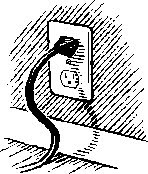A fuel cell creates electric energy without combustion. Rather, a chemical reaction breaks apart the fuel, likely hydrogen, although other fuels can be used, and sends the electrons through an electric circuit. This can drive a car motor or any electrical device. The electron then recombines with its hydrogen nucleus and air, forming water out the tail pipe.

Source: http://www.p2sustainabilitylibrary.mil/issues/emergeoct2005/index.html
There are two important points about fuel cells: (1) They create little or no pollution and (2) They are much more efficient than the internal combustion engine. A Proton Exchange Membrane (PEM) fuel cell, like the one pictured above, can achieve efficiencies of up to 45%, nearly twice that of the internal combustion engine. PEM fuel cells operate at low temperatures, 150 to 200 degrees Fahrenheit. Other types of fuel cells operate at temperatures up to 1800 degrees, making them candidates for combination with a steam cycle (rankine cycle, similar to today's combustion/steam turbine combined cycle power plants) and achieving efficiencies of 60% to 80%.
The fuel cell is not new but it is our future. It is the reason people can travel through and live in space because it provides electricity and water. It's applications are endless from locomotion to distributed generation to stationary power plant applications. It will reduce pollution dramatically and fuel consumption in all applications by 50%. Imagine, a fuel cell propelled car routinely getting 40 to 50 miles per gallon and power plants with twice the efficiencies they average today.
This is where U.S. energy policy should lead us. If I were president . . . .




No comments:
Post a Comment